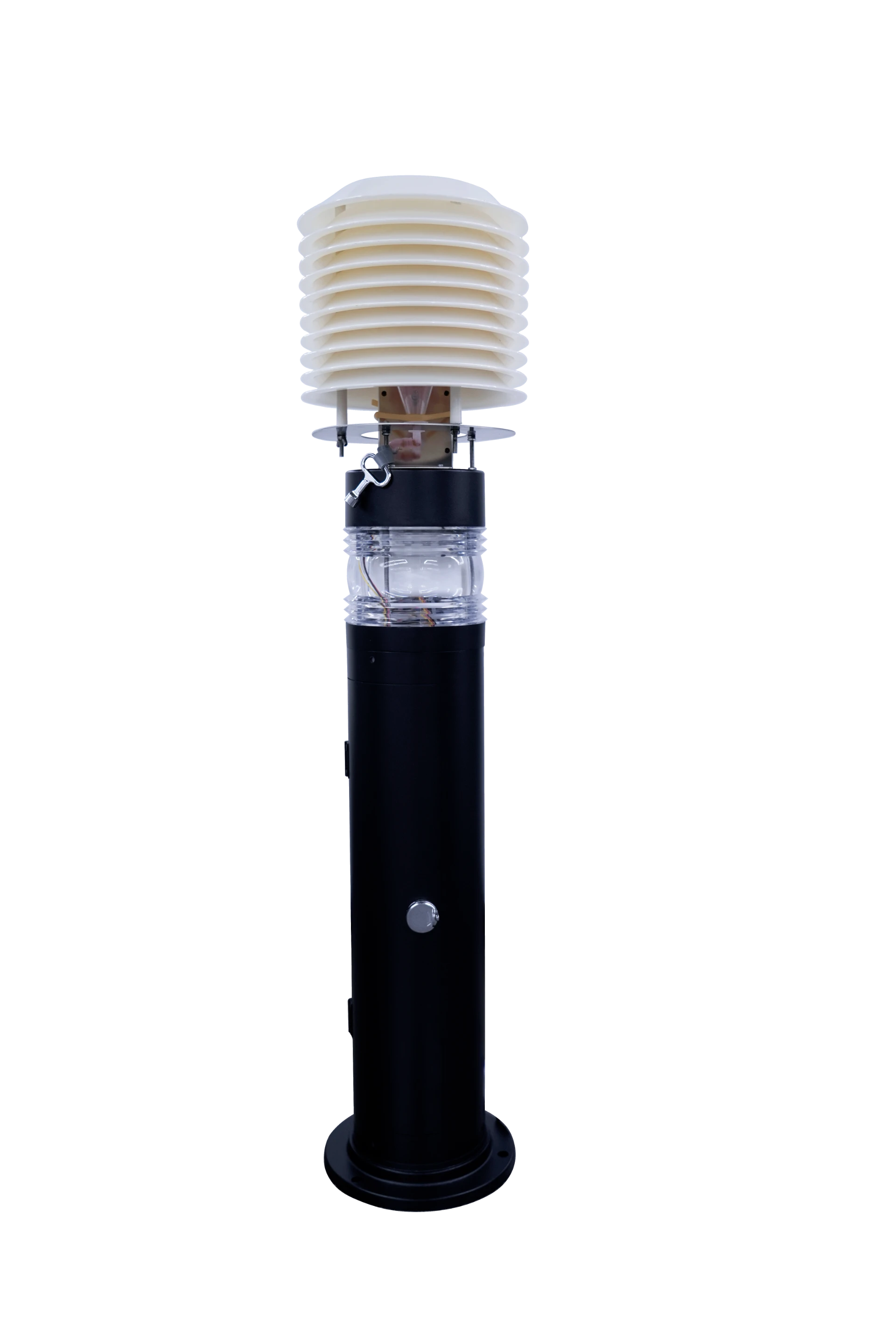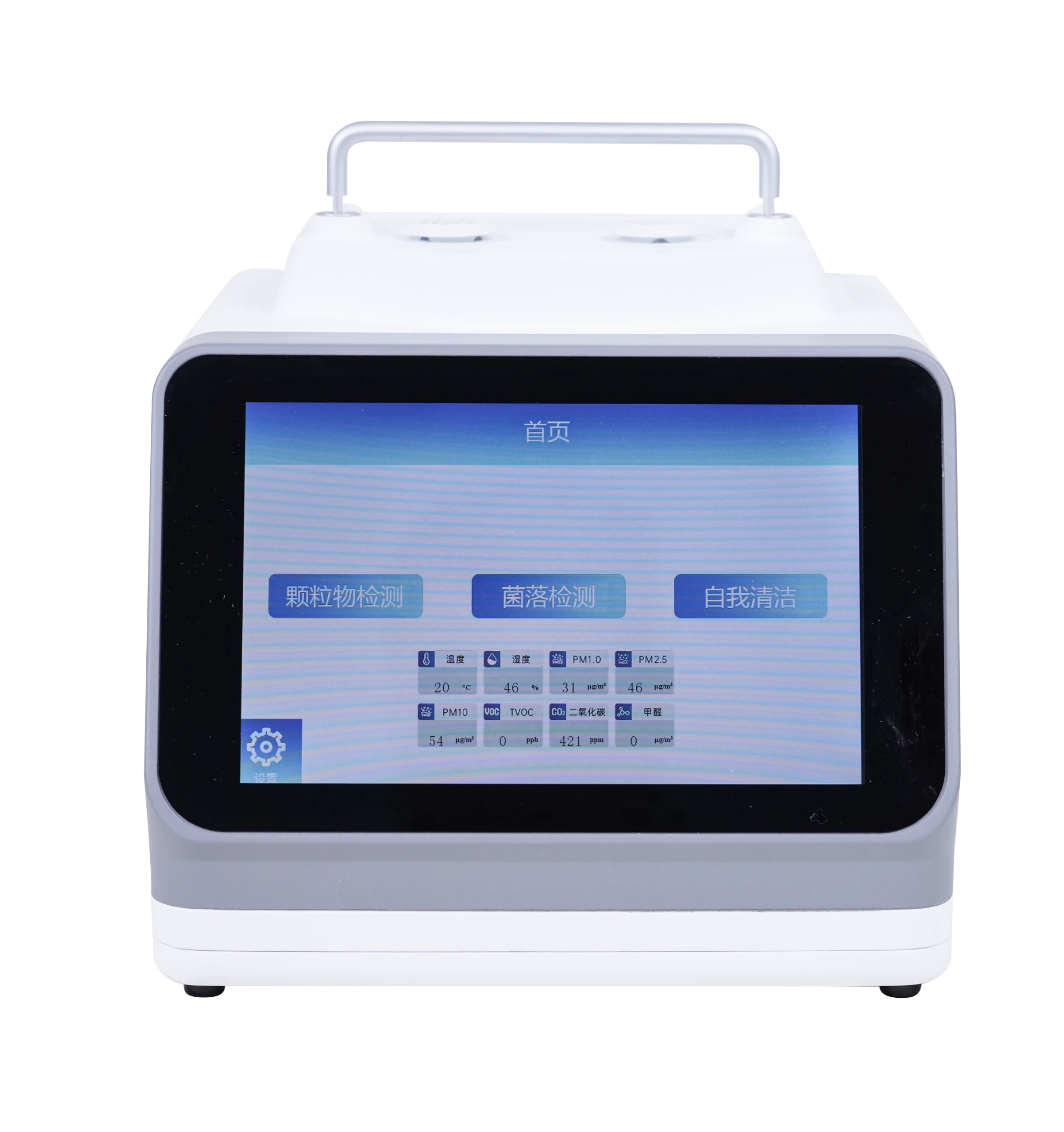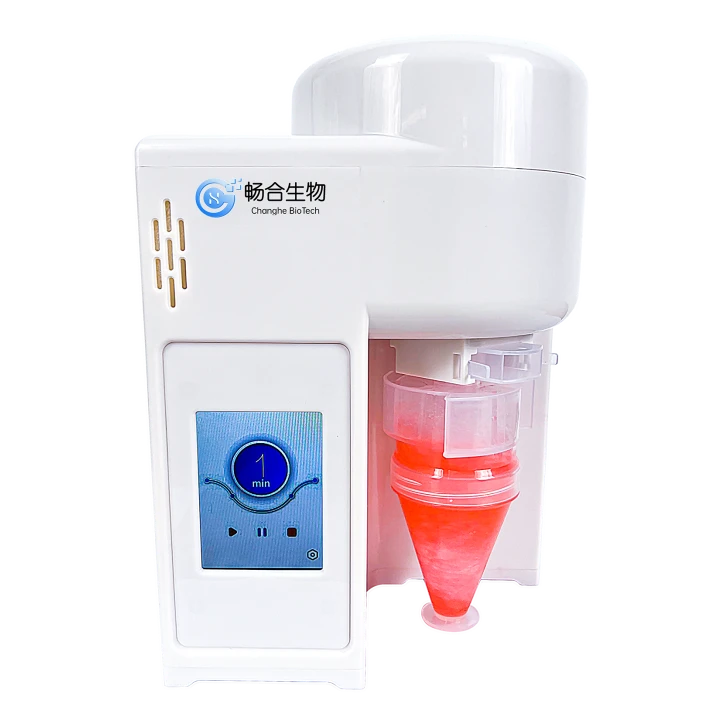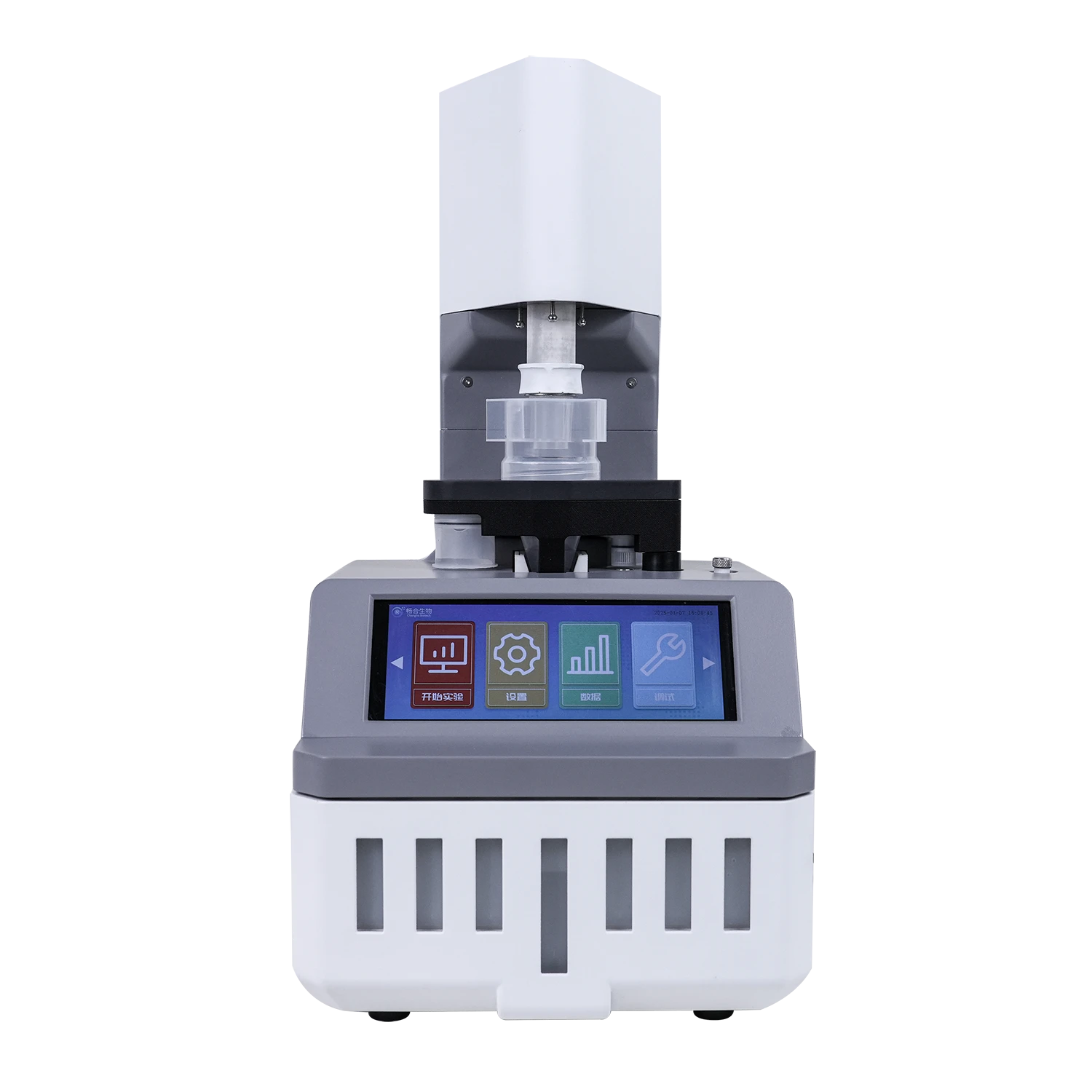
Precision Bioaerosol Detection & Air Quality Testing
In today's rapidly evolving environmental landscape, the need for precise and reliable detection of airborne biological particles, or bioaerosols, has never been more critical. From safeguarding public health in urban environments to ensuring pristine conditions in sterile manufacturing facilities, the science and technology behind bioaerosol detection are at the forefront of modern environmental monitoring. This comprehensive guide delves into the intricate world of bioaerosol detection, exploring its profound significance, the cutting-edge technologies that drive it, and its diverse applications, including essential services like **air and mold testing** and **toxic mold detection**.
The Crucial Role of Bioaerosol Detection in a Modern World
Bioaerosols are airborne particles of biological origin, encompassing a vast array of microorganisms such as bacteria, viruses, fungi (including mold spores), pollen, and fragments of biological material. These microscopic entities, though invisible to the naked eye, can have significant impacts on human health, agricultural productivity, and the integrity of industrial processes. The ability to accurately detect and quantify these bioaerosols is paramount for several reasons:
- Public Health Protection: Early detection of pathogenic bioaerosols can prevent outbreaks of infectious diseases in hospitals, public spaces, and densely populated areas. It's a cornerstone for proactive epidemic prevention.
- Environmental Monitoring: Understanding the composition and concentration of bioaerosols provides critical insights into air quality, pollution levels, and ecosystem health. This is vital for comprehensive **air and mold testing**.
- Occupational Safety: Industries like healthcare, agriculture, biotechnology, and waste management expose workers to specific bioaerosol risks. Monitoring helps implement protective measures.
- Building Health: The presence of certain bioaerosols, particularly mold spores, indicates indoor air quality issues that can lead to Sick Building Syndrome and structural damage. Effective **toxic mold detection** relies on accurate bioaerosol sampling.
- Biodefense and Security: Rapid detection systems are crucial for identifying deliberate releases of biological agents, providing early warning for national security.
Industry Trends in Bioaerosol Detection
The field of bioaerosol detection is experiencing rapid advancements driven by several key trends:
- Real-time Monitoring: Shift from traditional, labor-intensive culture-based methods to rapid, automated, real-time or near-real-time detection systems. This allows for immediate action in critical situations.
- Miniaturization and Portability: Development of compact, handheld devices for on-site analysis, reducing the need for laboratory transport and accelerating response times, especially for **air sample mold test** scenarios.
- Multi-Parameter Sensing: Integration of sensors capable of simultaneously detecting various bioaerosol types, alongside environmental parameters like temperature, humidity, and particle size.
- AI and Machine Learning Integration: Use of artificial intelligence for data analysis, pattern recognition, and predictive modeling, enhancing the accuracy and interpretability of results.
- Enhanced Specificity and Sensitivity: Continuous improvement in molecular and immunological techniques (e.g., PCR, immunoassay) to detect specific pathogens with higher precision and lower detection limits.
Technical Parameters and Characteristics of Advanced Bioaerosol Samplers
A sophisticated bioaerosol detection system, such as the Continous Bioaerosol Sampler, is defined by a range of critical technical parameters that dictate its performance and applicability:
- Sampling Efficiency: The effectiveness with which airborne particles are captured. This is influenced by aerodynamic diameter, sampler design (e.g., impaction, filtration, impingement), and flow rate. High efficiency across a broad particle size range (e.g., 0.5 to 10 µm for most bioaerosols) is crucial.
- Viability Preservation: For downstream culture-based analysis, the sampler must minimize stress on microorganisms to maintain their viability. This involves careful design of collection media and flow dynamics.
- Flow Rate Control: Precise and stable volumetric flow rate (e.g., 100-200 L/min) ensures consistent sampling and accurate quantification of bioaerosol concentrations.
- Sampling Duration: Capable of continuous operation over extended periods (e.g., hours to days) for long-term monitoring and event-based sampling.
- Automated Operation: Features like automated sample collection, real-time data logging, and remote control capabilities enhance efficiency and reduce human intervention.
- Lower Limit of Detection (LOD): The minimum concentration of bioaerosols that the system can reliably detect. A low LOD is essential for early warning and detecting trace amounts.
- Interference Resistance: Ability to operate accurately in the presence of common environmental interferents (e.g., dust, pollen, chemical fumes).
- Material Compatibility and Sterilizability: Components in contact with samples must be non-reactive, durable, and, for certain applications, sterilizable to prevent cross-contamination.
Product Deep Dive: The Continous Bioaerosol Sampler
The Continous Bioaerosol Sampler is a prime example of cutting-edge technology in the field of bioaerosol detection. Engineered for sustained, accurate, and reliable environmental monitoring, it addresses the demanding requirements of various sectors, including pharmaceutical cleanrooms, infectious disease research, public health surveillance, and indoor air quality assessment, particularly for sophisticated **air sample mold test** scenarios.
Key Features and Specifications of the Continous Bioaerosol Sampler
| Feature | Specification | Benefit |
|---|---|---|
| Sampling Method | Liquid Impinger (Wet Cyclonic Collection) | High collection efficiency, preserves viability, allows for various downstream analyses (PCR, culture). |
| Flow Rate | Adjustable, typically 100-250 L/min (±5%) | Versatile for different environmental conditions, ensures consistent sample intake. |
| Particle Size Range | 0.5 - 20 µm (optimized for respirable particles) | Covers a broad spectrum of airborne microorganisms, including bacteria, viruses, and mold spores. |
| Collection Liquid Volume | 500 ml - 1000 ml (user configurable) | Enables long-duration sampling without saturation, suitable for low-concentration environments. |
| Continuous Operation Time | Up to 24 hours (with suitable collection liquid volume) | Ideal for continuous monitoring, identifying episodic events, and long-term trends. |
| User Interface | Intuitive LCD touch screen, Remote Monitoring via Ethernet/Wi-Fi | Easy operation, real-time data visualization, remote control capabilities for convenience and safety. |
| Materials of Construction | 316L Stainless Steel, PTFE, High-grade Borosilicate Glass | Corrosion resistance, chemical inertness, autoclavable parts, ensuring sample purity and longevity. |
| Noise Level | < 50 dB at 1 meter | Suitable for use in noise-sensitive environments like offices and hospitals. |
| Dimensions (H x W x D) | Approx. 600mm x 300mm x 350mm | Compact design for easy deployment in various settings. |
| Power Supply | AC 100-240V, 50/60 Hz | Universal compatibility for global deployment. |
| Compliance | ISO 14644-1 (Cleanroom compatibility), CE, RoHS | Meets stringent international standards for quality and safety. |
Manufacturing Process of the Continous Bioaerosol Sampler: A Commitment to Precision and Durability
The manufacturing of the Continous Bioaerosol Sampler is a testament to precision engineering, robust material science, and stringent quality control. Each step is meticulously designed to ensure the highest performance, longevity, and reliability for critical bioaerosol detection applications.
Bioaerosol Sampler Manufacturing Flow: From Concept to Calibration
1. Design & Material Selection: Initial design phase focuses on aerodynamic efficiency, viability preservation, and user ergonomics. Key materials chosen include 316L Stainless Steel for its superior corrosion resistance (critical in humid or chemically aggressive environments common in petrochemical and wastewater treatment facilities) and ease of sterilization; PTFE (Polytetrafluoroethylene) for seals and tubing due to its chemical inertness and low friction; and high-grade Borosilicate Glass for the collection vessel, ensuring transparency and resistance to thermal shock and chemical attack. These materials are selected for their longevity, which contributes to an exceptional service life of 10+ years under proper maintenance.
2. Precision Component Fabrication:
- CNC Machining: Intricate components, such as the impaction nozzle and inlet cone, are fabricated using state-of-the-art CNC machining. This ensures micron-level precision for critical air flow paths, directly impacting sampling efficiency and particle capture rates. The smooth surface finish obtained from CNC machining also minimizes particle bounce and deposition.
- Laser Cutting & Welding: Stainless steel enclosures and frames are shaped using high-precision laser cutting, followed by TIG (Tungsten Inert Gas) welding. This process guarantees strong, clean, and leak-proof joins, crucial for maintaining system integrity and preventing external contamination.
- Glass Blowing & Annealing: The borosilicate glass collection vessel undergoes specialized glass blowing techniques to achieve the exact dimensions and robustness, followed by annealing to relieve internal stresses, enhancing its durability and resistance to breakage.
3. Assembly & Integration: Cleanroom assembly is maintained to prevent contamination. Skilled technicians meticulously assemble the fabricated components, integrating the pneumatic system, control electronics, sensors, and the user interface. All connections are rigorously checked for leaks and proper alignment.
4. System Calibration & Testing: Each unit undergoes extensive calibration against certified flow standards (e.g., traceable to NIST) and performance testing. This includes verifying flow rate accuracy, pressure stability, and noise levels. Test protocols ensure the sampler meets or exceeds design specifications for capture efficiency across various particle sizes.
5. Quality Control & Certification: A multi-point quality inspection is performed, covering everything from material certificates to final functional tests. The Continous Bioaerosol Sampler is manufactured under an ISO 9001 certified quality management system and complies with relevant international standards such as ISO 14644-1 (Cleanroom compatibility) and ANSI/ASHRAE 52.2 (Air Cleaning Devices). This robust process ensures the product's reliability and superior performance, offering an industry-leading service life and minimal maintenance.
Technical Advantages in Typical Application Scenarios
The Continous Bioaerosol Sampler’s design and manufacturing excellence translate into tangible advantages in real-world applications:
- Petrochemical & Metallurgy: In these industries, the sampler's robust 316L Stainless Steel construction offers exceptional anti-corrosion properties against harsh chemical fumes and high humidity, ensuring long-term reliability where other materials would quickly degrade. Its continuous monitoring capability can detect airborne microbial growth in cooling towers, preventing costly equipment corrosion and biofouling.
- Water Supply & Drainage (Wastewater Treatment): The system's sealed design and chemical-resistant components enable safe and continuous monitoring of airborne pathogens (e.g., Legionella, coliforms) released from aeration tanks or spray irrigation, protecting facility workers and nearby communities. The ability to preserve sample viability is crucial for subsequent culture-based analysis of waterborne pathogens.
- Pharmaceutical & Biotech Cleanrooms: Compliance with ISO 14644-1 ensures the sampler itself does not contaminate the cleanroom environment. Its high collection efficiency for sub-micron particles and real-time data output are vital for maintaining sterile conditions, preventing product contamination, and ensuring regulatory compliance. The liquid impinger method minimizes particle desiccation, preserving delicate biological samples for genetic analysis.
- Indoor Air Quality & Remediation (Mold Testing): For professional **air and mold testing** and **toxic mold detection**, the Continous Bioaerosol Sampler provides a superior alternative to traditional impaction methods. Its liquid collection method significantly improves the recovery rate of viable mold spores, even those that are delicate or stressed, leading to more accurate quantitative analysis of mold burdens in buildings. This directly translates to more reliable remediation strategies and improved occupant health outcomes.
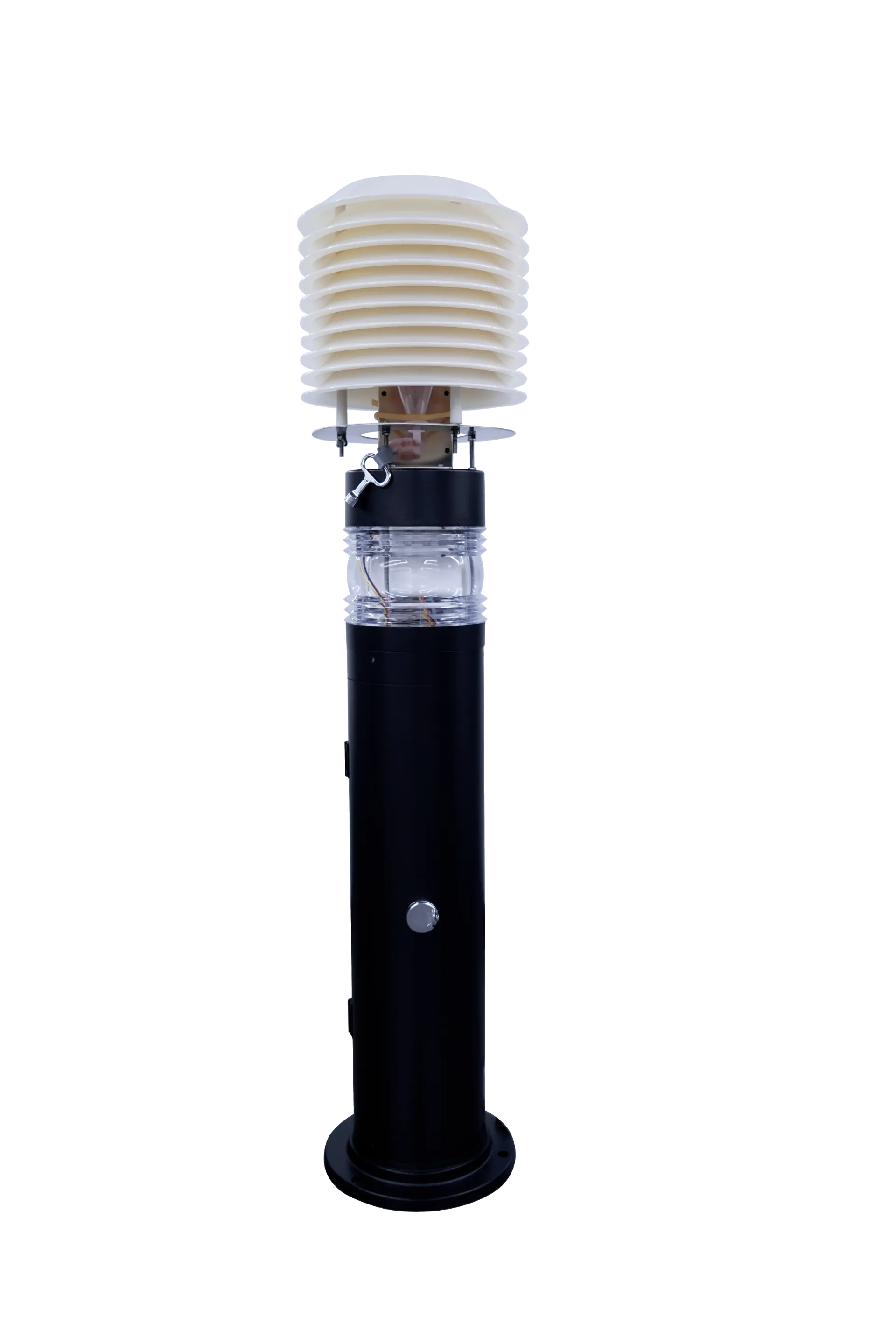
Fig 1: The Continous Bioaerosol Sampler in a controlled laboratory environment, demonstrating its compact and robust design suitable for precise bioaerosol detection.
Comparative Analysis: Continous Bioaerosol Sampler vs. Traditional Methods
Understanding the superiority of the Continous Bioaerosol Sampler requires a comparison with conventional methods employed for bioaerosol detection. While traditional methods like Andersen impactors or filter-based samplers have their place, they often come with limitations that advanced systems overcome.
| Feature/Method | Continous Bioaerosol Sampler | Andersen Impactor (Agar Plates) | Filter-based Samplers |
|---|---|---|---|
| Collection Medium | Liquid (e.g., PBS, specialized solutions) | Solid Agar Plates | Porous Filters (e.g., Gelatin, PTFE) |
| Viability Preservation | Excellent (Particles suspended in liquid, reduced desiccation stress) | Moderate (Impact on solid surface can cause stress/damage) | Poor to Moderate (Desiccation on filter surface, impaction stress) |
| Continuous Sampling | Yes, up to 24 hours or more | Limited (Plates dry out, need frequent changing, typically 5-10 min sampling) | Limited (Filters clog, require frequent changing, typically 1-4 hour sampling) |
| Downstream Analysis Flexibility | High (Culture, PCR, immunoassay, flow cytometry) | Limited (Primarily culture-based) | Moderate (Culture, PCR - often requires elution) |
| Particle Bounce/Re-entrainment | Minimal (Captured in liquid) | Significant (Particles can bounce off agar or be re-entrained) | Can occur (Particles can dislodge from filter) |
| Sensitivity (Low Conc.) | High (Long sampling times accumulate low concentrations effectively) | Moderate (Short sampling times limit accumulation) | Moderate (Filter capacity limitations) |
| Automation & Remote Cap. | High (Automated sampling, data logging, remote control) | Low (Manual plate changes) | Low (Manual filter changes) |
| Cost of Consumables | Moderate (Liquid media, less frequent changes) | High (Numerous agar plates, frequent changes) | Moderate (Filters, frequent changes) |
Customized Solutions for Diverse Bioaerosol Detection Needs
Recognizing that no two applications are exactly alike, our company specializes in providing tailored bioaerosol detection solutions. Our team of experienced engineers and scientists works closely with clients to understand their unique environmental challenges, regulatory requirements, and operational constraints.
Our Customization Capabilities Include:
- Sampling Protocol Development: Designing specific sampling strategies for unique environments (e.g., high-dust areas, cleanrooms, outdoor urban monitoring) to optimize collection efficiency and data relevance.
- Integrated Monitoring Systems: Developing comprehensive systems that combine the Continous Bioaerosol Sampler with other environmental sensors (e.g., particulate matter sensors, meteorological stations, gas detectors) for a holistic view of air quality.
- Software & Data Analytics Integration: Customizing data visualization platforms, integrating with existing Building Management Systems (BMS), or developing AI-driven predictive models for anomaly detection and trend analysis specific to **air and mold testing** requirements.
- Specialized Collection Media: Recommending or developing custom collection liquids optimized for specific biological targets (e.g., highly saline solutions for marine bioaerosols, specific buffers for viral stability).
- Deployment & Training: Providing on-site installation, commissioning, and comprehensive training for client personnel to ensure optimal system operation and maintenance.
Application Scenarios and Success Stories
The Continous Bioaerosol Sampler has been successfully deployed across a multitude of critical sectors, providing invaluable data and enabling proactive environmental management. Here are a few illustrative examples:
Case Study 1: Large-Scale Public Health Surveillance in Urban Centers
A major metropolitan health department faced challenges in continuously monitoring for airborne pathogens, especially during flu seasons or potential bioterrorism threats. Traditional methods were labor-intensive and provided delayed results. By deploying a network of Continous Bioaerosol Samplers at key public transportation hubs and ventilation inlets, the department achieved:
- Real-time Insights: Continuous sampling provided data streams that, when analyzed using integrated rapid PCR assays, offered near real-time alerts on the presence of specific viral and bacterial loads.
- Early Warning: Enabled the identification of pathogen spikes hours or even days before clinical cases emerged, allowing for targeted public health interventions like advisory dissemination and enhanced cleaning protocols.
- Reduced Manpower: Automated operation significantly reduced the need for manual sample collection, reallocating personnel to data analysis and response.
Case Study 2: Precision Air and Mold Testing in Commercial Buildings
A property management firm managing high-rise office buildings experienced recurrent complaints of "musty odors" and occupant health issues. Despite previous **air sample mold test** attempts using traditional impaction, results were inconsistent. Our Continous Bioaerosol Sampler was deployed for extended periods (24-48 hours) in affected areas:
- Comprehensive Mold Profile: The continuous liquid collection allowed for a much higher capture rate of viable and non-viable mold spores, providing a more accurate and comprehensive profile of airborne fungi.
- Identification of Intermittent Sources: By sampling over long durations, the system detected intermittent spikes in mold spore counts linked to specific HVAC cycles or weather events that short-term sampling would have missed. This was crucial for pinpointing the source of moisture intrusion and guiding remediation efforts, leading to effective **toxic mold detection**.
- Validation of Remediation: Post-remediation, the samplers were used to verify that mold spore levels had returned to healthy baseline levels, providing empirical evidence of successful clean-up.
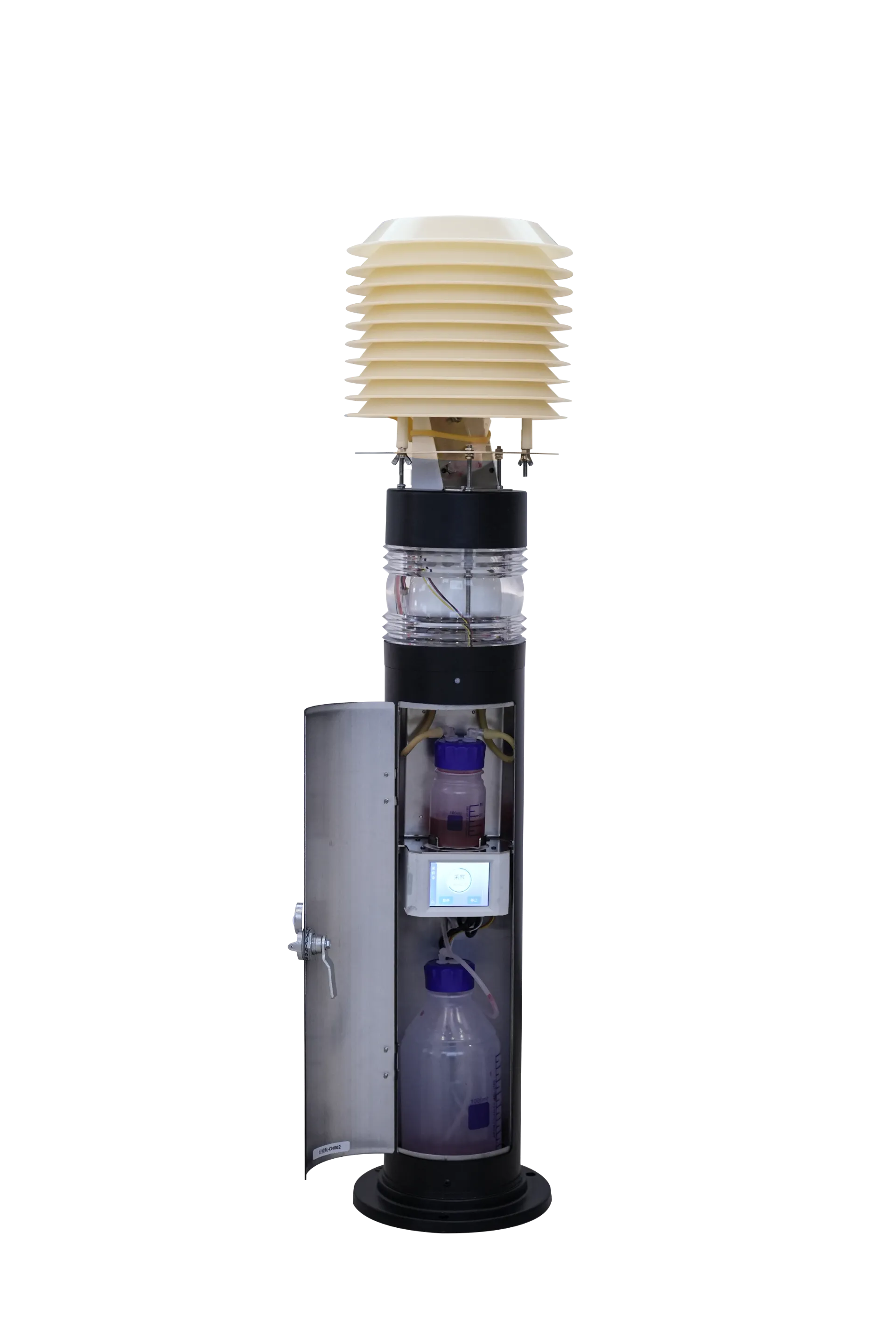
Fig 2: A technician setting up the Continous Bioaerosol Sampler for an extended **air sample mold test** in a commercial building, highlighting its ease of deployment for critical **toxic mold detection** tasks.
EEAT Standards: Our Commitment to Excellence
Our dedication to the highest standards in bioaerosol detection is enshrined in our adherence to Google's EEAT principles: Expertise, Experience, Authoritativeness, and Trustworthiness.
Expertise: Unparalleled Knowledge and Innovation
With decades of collective experience in aerosol science, microbiology, and environmental engineering, our team comprises industry-recognized experts. We are not just vendors; we are problem-solvers who deeply understand the nuances of airborne particulate behavior, microbial viability, and the complexities of environmental sampling. Our continuous investment in R&D ensures that the Continous Bioaerosol Sampler incorporates the latest advancements, such as enhanced impaction nozzles for superior capture efficiency and advanced fluidics for optimal viability preservation. We regularly publish white papers and participate in academic conferences, contributing to the broader scientific understanding of bioaerosol detection.
Experience: Proven Performance in Real-World Scenarios
Our products have been deployed in some of the most challenging environments worldwide, from Arctic research stations to urban jungles and sterile manufacturing cleanrooms. This extensive real-world experience has provided invaluable feedback, leading to continuous product refinement. Our clients consistently report superior performance in terms of data accuracy, system reliability, and ease of use. For instance, a leading pharmaceutical company reported a 30% reduction in false-positive contamination alerts after switching to our Continous Bioaerosol Sampler, directly attributing it to the sampler's superior viability preservation and precise collection capabilities.
Authoritativeness: Industry Recognition and Standards Compliance
We are a proud member of key industry associations such as the American Association for Aerosol Research (AAAR) and the International Society for Indoor Air Quality and Climate (ISIAQ). The Continous Bioaerosol Sampler is rigorously tested and certified to meet or exceed international standards including ISO 9001 for quality management, ISO 14644-1 for cleanroom compatibility, and complies with FDA guidelines for pharmaceutical applications. Our partnerships with leading research institutions and environmental consulting firms underscore our position as an authoritative voice in the field. We frequently collaborate on studies cited in peer-reviewed journals, further cementing our authoritative standing.
Trustworthiness: Transparency, Support, and Commitment
We believe trust is built through transparency and unwavering support.
- Quality Assurance: Every Continous Bioaerosol Sampler undergoes a multi-stage Quality Control process, with detailed calibration certificates provided.
- Delivery & Logistics: We maintain a robust supply chain to ensure timely delivery, with an average lead time of 4-6 weeks for standard configurations, and clear communication for custom orders.
- Warranty & Support: All units come with a comprehensive 2-year manufacturer's warranty covering parts and labor. We offer extended warranty options and service contracts. Our dedicated technical support team is available 24/7 via phone, email, and a secure online portal to provide expert assistance, troubleshooting, and preventative maintenance advice. We also offer on-site service and training globally.
- Customer Feedback & Privacy: We actively solicit customer feedback through surveys and direct engagement, using it to drive product improvements. We adhere strictly to data privacy regulations (e.g., GDPR), ensuring client information is handled with the utmost confidentiality.
Data Visualization: Comparative Bioaerosol Detection Parameters
To further illustrate the capabilities and considerations in selecting a bioaerosol detection system, here's a generalized comparison of key parameters found across different commercial samplers, emphasizing where modern liquid impingers excel.
| Parameter | Continous Liquid Impinger (e.g., Our Sampler) | Traditional Impaction (e.g., Andersen) | Real-time Optical Counters (e.g., Aerodynamic Particle Sizer) | Filter Samplers |
|---|---|---|---|---|
| Principle | Inertial impaction into liquid | Inertial impaction onto agar | Light scattering, time-of-flight | Filtration through porous media |
| Primary Output | Liquid sample for culture/molecular analysis | Culturable colonies on agar | Particle size & count in real-time | Filter for microscopic/molecular analysis |
| Viability of Organisms | High preservation | Moderate (desiccation/impact stress) | Not applicable (no collection of live organisms) | Low (desiccation, stress) |
| Sampling Duration | Continuous (Hours to Days) | Short (Minutes) | Continuous (Unlimited) | Medium (Hours) |
| Sample Recovery (CFU/m³) | Excellent | Good for culturable, poor for stressed | Not applicable (particle counts only) | Variable, often requires elution |
| Sensitivity (Low Concentrations) | Very Good (due to long sampling) | Limited (short sampling time) | Good for total particles, limited for specific bio-markers | Good (can accumulate) |
| Cost of Analysis | Medium (lab analysis of liquid) | Medium (agar plates & incubation) | High (instrument cost) | Low to Medium (microscopy/molecular) |
| Maintenance Req. | Low-Medium (fluid changes) | Medium (plate changes, sterilization) | Low (calibration) | Medium (filter changes) |
Professional FAQ on Bioaerosol Detection and Our Sampler
In conclusion, the advancements in bioaerosol detection, spearheaded by sophisticated instruments like the Continous Bioaerosol Sampler, are transforming our ability to monitor, understand, and mitigate airborne biological risks. Its precise engineering, continuous sampling capabilities, and robust construction make it an indispensable tool for public health, environmental protection, industrial safety, and the critical tasks of **air and mold testing** and **toxic mold detection**. As the demand for cleaner and safer environments grows, the role of advanced bioaerosol sampling technology will only become more pronounced.
References & Further Reading:
- "Bioaerosols: Assessment and Control" - American Conference of Governmental Industrial Hygienists (ACGIH). While a guideline, it references the principles of bioaerosol sampling. https://www.acgih.org/publications/bioaerosols-assessment-and-control/
- "Continuous monitoring of airborne fungal spores in indoor environments" - Journal of Environmental Monitoring, 2013, 15, 276-282. (Example of academic journal on continuous monitoring benefits). https://pubs.rsc.org/en/content/articlelanding/2013/em/c2em30600j
- "The Importance of Aerodynamic Diameter in Bioaerosol Sampling" - Aerosol Science and Technology. (General topic on sampling principles). https://www.tandfonline.com/doi/abs/10.1080/02786826.2016.1265819
-
Accurate Air Sample Mold Test | Mould Detector DeviceNewsAug.06,2025
-
Accurate Air Sample Mold Test | AI-Powered AnalysisNewsAug.04,2025
-
AI Air Sampling Bacteria Detection Kit | Accurate & FastNewsAug.01,2025
-
High-Accuracy PCR Panel for Cats – Fast Diagnosis & Reliable ResultsNewsJul.30,2025
-
Advanced Bioaerosol Detection for Accurate Air and Mold TestingNewsJul.30,2025

